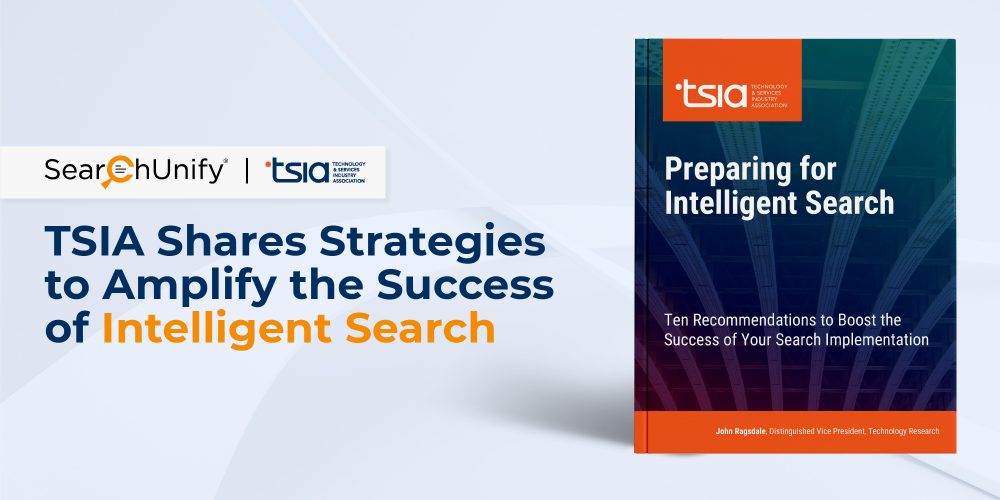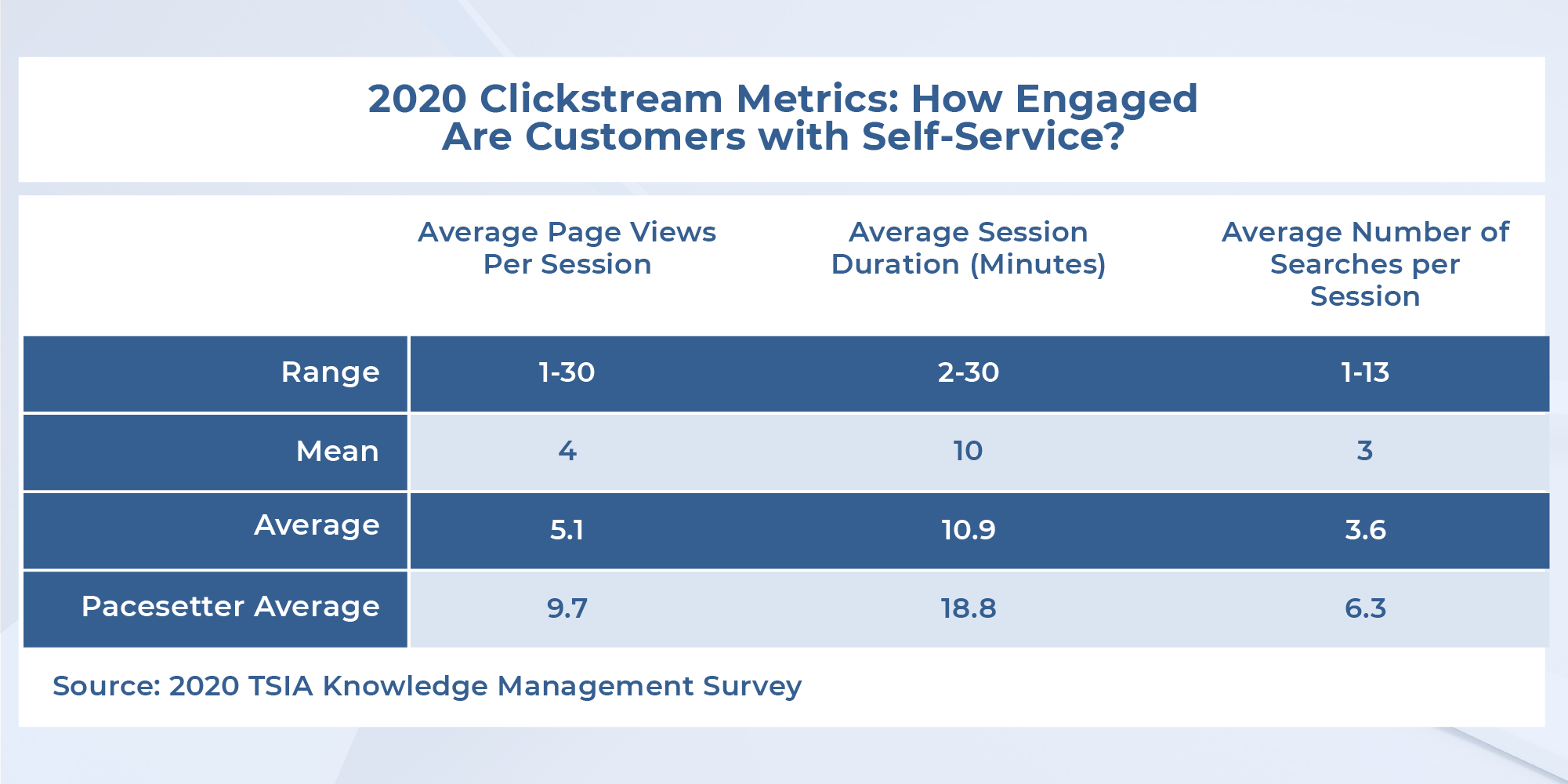
You must be familiar with the phrase “change is the only constant in the world.” But when it comes to enterprises, there is another constant: data retrieval systems.
Enterprise information retrieval systems came into existence even before the internet did. However, it was the rise of web search engines that amped up user expectations for data discovery, best-in-class relevance, and intuitive personalization. Hence, enterprise search had to evolve to catch up with these expectations.
Today, enterprise search combined with a raft of AI technologies like ML, NLP, semantic processing, and so on, has given birth to next-gen search, popularly known as intelligent search.
“TSIA defines intelligent search as an enterprise search platform that directly indexes content, in any repository and any format, and leverages a layer of artificial intelligence and machine learning to understand the intent of searches and provide increasingly accurate results over time.”
As the influx of data grows, intelligent search has become imperative to access and manage information across enterprise portals. In fact, according to TSIA, 67% of its members have already embedded intelligent search in their business. However, to take advantage of its enormous potential, most enterprises have a long way to go. That’s because simply investing in such platforms isn’t enough. Companies also need to prepare before implementing intelligent search to get the maximum ROI.
Keeping this in mind, TSIA has published a dedicated report on how to put adequate time and resources to harness the full power of intelligent search. This blog post provides a sneak peek into the report and lists four things that companies should do to prepare for its implementation.
4 TSIA Recommendations to Set Up Your Search Implementation for Success
I. Identify Relevant Metadata & Content for Indexing
Enterprises generate a humongous amount of data every day, and a majority of it is scattered in unstructured, monolithic content repositories.
Indexing relevant metadata and content are pre-requisites for the continual improvement of search results. So, it’s imperative to get them right in the first go. Here are a few tips for identifying the right content:
- Useful Content Repositories
Support reps create and manage content endlessly. They know which information is the most and least useful to the enterprise and customers. Ask them to list the data repositories they access the most.
- Customer Community-Generated Data
“According to the 2020 TSIA Knowledge Management Survey, only 26% of companies have indexed their community for self-service searching.”
An active community space contains valuable content and knowledge in the form of blog posts, video libraries, feature updates, etc. Many enterprises forget or skip to analyze and index the community data that can be a game-changer.
- Gather Historical Insights
Content metrics like page rating, article views, upvotes & solved discussions, etc., are treasure troves of valuable information. Do not forget to take them into account while deciding which content to index.
II. Create Taxonomy Carefully
Enterprises can structure the data into categories and subcategories, thus creating a taxonomy. This helps users to drill down to more relevant results. Planning a thorough taxonomy in the initial implementation phase has a myriad of benefits. It helps the intelligent search engine to retrieve better results and create facets and filters depending on your metadata, such as date, author, product, version, etc. that refine the user experience.
Users can select these facets and filters for relevant results, thus improving knowledge discovery. Hence, take your time while creating the taxonomy. Ask your employees, customers, and even search vendors before planning the ideal filtering options.
III. Determine “Before” Metrics
Most enterprises work on improving the search experience. But, how do we define improvement without the metrics? To quote Peter Drucker, “If you can’t measure it, you can’t improve it.”
It is imperative to determine “before” metrics of your intelligent search implementation project to gauge its effectiveness and impact on agent productivity and customer self-service success. You can shortlist employee productivity metrics such as MTTR, FCR, Cost per ticket, AHT, and so on. On the customer side, you can go with CSAT, NPS, CES, customer churn rate, and so on. This allows enterprises to drive improvements and kick-off business success journeys.
As shown in the image, enterprises can determine how their customers are engaging with self-service content. Based on this, they can optimize their content strategy and take the necessary steps to boost self-service.

IV. Harness the Power of Search Analytics From Day 1
Analytics is the backbone of modern enterprises. It helps them derive actionable intelligence and improve support efficiency. The key is to constantly keep an eye on the numbers that matter.
TSIA research recommends these 3 key analytics:
- Content Gap Analysis
According to TSIA’s 2020 Knowledge Management Survey, though more than two-thirds of companies have adopted intelligent search, only 13% are actively analysing content gaps.
By quantifying the content gaps, it gets easier to determine what your users like or dislike. It is an indispensable step while creating a content strategy. Enterprises must evaluate the existing content and discover content gaps for a seamless experience.
- Usage Analysis
Usage analysis allows you to identify the top-and least-used content, even by demographic. Based on this, enterprises can develop a self-service database with a collection of FAQs, how-to videos/ guides/articles that enable access to different forms of data and information.
- Relevancy Analysis
Most users spend the majority of their time in the trenches to find the right contextual knowledge. Enterprises must focus on search relevance and check if users’ search queries are generating relevant results. Based on the insights, they can manually tune the engine to display more accurate results.
Want More Recommendations? Get Free Access to the Complete TSIA Report
While intelligent search platforms have crept into businesses, the technology will continue to evolve for years to come. Your organization needs to ensure that it fully leverages the capabilities intelligent search offers. This blog has barely scratched the surface. TSIA’s report unlocks more valuable and interesting recommendations that will prepare you with successful implementation of intelligent search in your enterprise. Read the complete report here.















